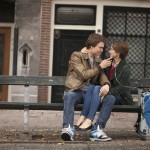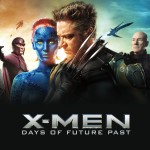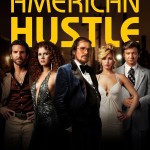
Editor’s Warning: BEWARE – MASSIVE SPOILERS
The Lego Movie has already been acclaimed as the greatest toy commercial ever crafted, but the reason for its success is that it is so much more than the mere money grab that we expected: it is actually a good movie. The film deals with challenging, topical issues and manages to take a more nuanced approach than the usual vapid platitudes one would expect in an animated children’s movie. Within its hundred-minute duration, we deal with big business, the herd mentality, world-building, and, for good measure, some metaphysics (in the form of an absurdly catchy song).
The aspect of the movie which has perhaps drawn the most negative attention from critics is the allegedly-disingenuous anti-big business message. Of course, this might be disingenuous if that were really the message. Instead, with the conversion of President Business at the end, the point is that business can be either good or bad. It thus avoids the pitfalls of propagandistic art in its deliberate presentation of big business as morally ambiguous.
The film also pokes fun at mindless consumerism: watching inane, popular sitcoms, buying trendy, over-priced coffee, and eating at chain restaurants all come under fire. Instead of placing the emphasis on being satisfied with what is given or pre-made, the film’s message seems to be that it is better for people to create for themselves, like the Master Builders. In fact, our hero, Emmet, is scorned by his compatriots when he fails to create his own designs.
Reviewers have also criticized this film for its apparent self-contradictions about rule-following. The film opens with a social critique: people tend to follow rules thoughtlessly and therefore lead meaningless lives. This point appeals to the social sensibilities of those who would espouse a more libertarian worldview, what rankles them is the fact that the movie later seems to support following rules for the sake of defeating President Business. It would seem that the point is not that rules are inherently bad so much as rules need to be examined. It is noteworthy that even following these rules does not ultimately lead the heroes to victory. Again, the movie avoids simplistic solutions to these questions and instead invites the viewer to think more deeply about the value of rules. In and of themselves, they are neutral, but we need to examine them to see whether they are worthy of our allegiance. As St. Paul says, “Try all things; hold fast what is good.”
Perhaps what has been most overlooked in many of the critical evaluations of The Lego Movie is the role of sub-creation or ‘mythopoeia.’ In his essay, “On Fairy Stories,” J.R.R. Tolkien describes the mythopoeic artist as the one who uses what he has been given to fashion his own world with its own stories; this is precisely what The Lego Movie does and what Legos encourage in children. The movie takes disparate worlds and characters and uses them to create a world of its own, with its own sets of rules. Moreover, both the toys and the movie encourage children to do this themselves. Part of the fun is to create your own characters, narratives, and settings. But, to be truly mythopoeic, the world has to be open to others to play in. Just as myths are the product of whole cultures; the mythopoeic world is most rich when it adapts to accommodate multiple authors. In the film, the father learns this lesson by allowing his son to play in his world, and the son learns by allowing his sister to join the fun.
No discussion of The Lego Movie would be complete without an examination of its theme song, “Everything is Awesome.” At the beginning, the song is an ironic statement about the unthinking masses’ appreciation of the general state of affairs. They had been pleased with following the rules of a tyrant because they did not bother to stop to think of anything better. Toward the end, however, the song has changed meaning: it becomes an anthem to the beauty and wonder of each individual being. Each and every thing insofar as it is, is good, and this is a fact that deserves to be appreciated and celebrated. This truth applies especially with people, both in real life and within the film. Lewis says that we each are like gods, immortal beings; Chesterton reflects this same attitude when he meets a peasant and says that he saw the image of God approaching him. In the film, each person is recognized as having fantastic potential; each person is special.
In The Incredibles, Dash shows wisdom when he notes that if everyone is special, no one is, and yet, The Lego Movie is equally right to celebrate the unique potential that lies within each person. Dash is arguing against egalitarianism that exaggerates everyone’s value; The Lego Movie is arguing against the opposite brand of egalitarianism that would devalue everyone. Though the film leaves big business, consumerism, and rules as open questions, it is noteworthy that it takes an uncompromising stance on the innate worth of each individual, especially those scorned by society. The Master Builders at first looked down on Emmet for his lack of creativity and intelligence. But in the end, it is Emmet and his trust in the inherent goodness of even his enemy that wins the day.












